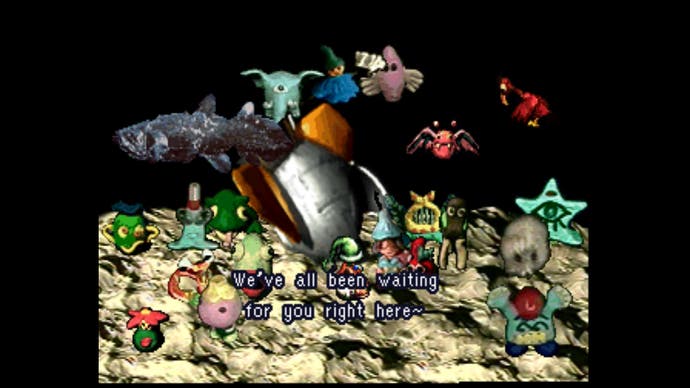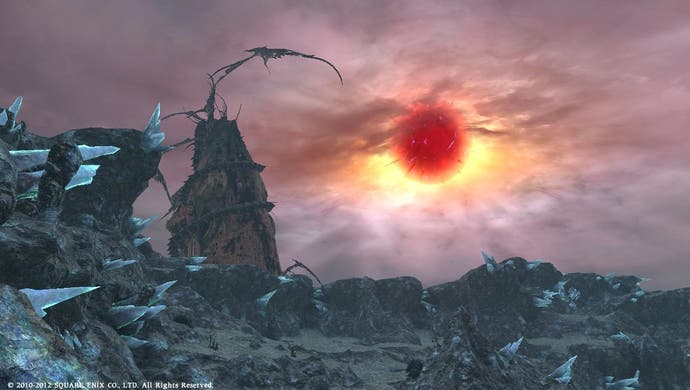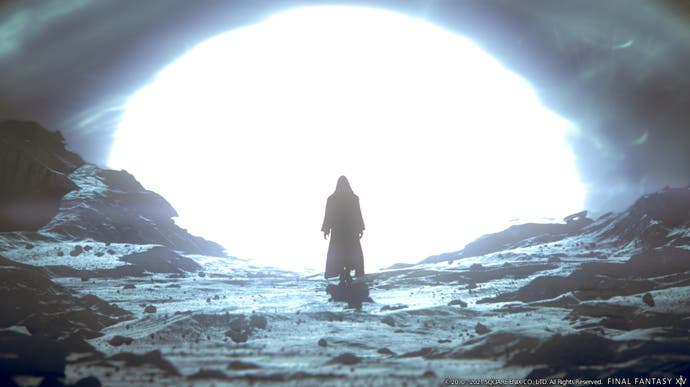"Something we can't do without": a game designer considers the moon
Final Fantasy 14's Naoki Yoshida on our favourite satellite.
Ahead of tonight's Super Strawberry Moon - the last Supermoon of 2021 - we thought it would be interesting to take a look at our moon through the specific lens of Japanese video games, focusing in on one series in particular.
Art can take us to whole other universes. Often we want to stay fairly close to home, though. The moon remains the most significant space object in our collective and creative consciousness, from mythology to pop culture, and of course it looms large in video games. Whether as an allusion, a symbol, an actual destination, or even a threat, the moon has played more roles in games than it has phases in the sky.
For a country commonly associated with the rising sun, I personally find it fascinating how significant the moon is in Japanese culture - and how often it makes it into Japanese games as a result. In the wider culture, one of the most popular Japanese mythical figures is Lady Kaguya from The Tale of the Bamboo Cutter, a story about a princess who hails from the moon. There is also a Shinto moon deity called Tsukuyomi. As a child you may have heard stories about the moon being made of cheese, but in Japanese folklore, rabbits live on the moon!

You don't have to go far back to find a Japanese video game that finds a role for the moon. From Blooborne's moon to the Blood Moon that shows up in Breath of the Wild and respawns all the monsters in Hyrule, games have given you many reasons to keep an eye on our most famous satellite. Hyrule's Blood Moon is the moon's second starring role in the Zelda series, as it happens, following on from the learning moon of Majora's Mask that seems set to bring about certain doom for the people of Termina.
But if there's one series where the moon consistently has a great significance, it's surely Final Fantasy. Come November, all signs suggest that it will be the setting for the epic climactic finish of Final Fantasy 14 with its Endwalker expansion. Because of this, producer and director Naoki Yoshida was kind enough to take time out of his busy schedule to let me pick his brain on all things moon-related.

Prior to the Endwalker expansion, the moon's high point in the series is most probably Final Fantasy 4, as our heroes travel to the red moon in the game's final act, where we learn that Cecil is actually a descendant of the advanced race of Lunarians. Unsurprisingly, fans have wondered if there are any links between the moons of Final Fantasy 4 and Final Fantasy 14's. "No, there aren't any overt links," Yoshida tells me. "For any homage to previous Final Fantasy titles that we incorporate, the setting is always unique to FF14. Some parts may look and feel similar to previous games, but the story is grounded in a different reality and we're merely borrowing such elements."
Of course, even before Endwalker, the moon has already cropped up multiple times in Final Fantasy 14. Take Dalamud, the smaller of the two moons orbiting the world of Hydaelyn, which also served as a prison for dreaded Elder Primal Bahamut. In the 1.0 version of the game, this moon changed colour to red, gradually expanding in the sky - it was actually descending - before unleashing Bahamut who would scorch the land of Eorzea, bringing about the apocalyptic events that lead to A Realm Reborn.

Given that Dalamud's role in the destruction of Eorzea, the way the Warrior of Darkness was first introduced as part of the villainous Ascians' schemes in Heavensward's epilogue, and the fact that Stormblood also saw players fighting a Primal called Tsukuyomi (named after the Japanese Shinto moon deity, but also taking design inspirations from Lady Kaguya and rabbits), you'd be forgiven for thinking that the moon has primarily sinister connotations for the Final Fantasy team.
"Why no, I don't think there's anything sinister at all," Yoshida laughs. "Rather, the image of [the moon] being mystical, mysterious and somewhat attractive is stronger for me. In particular, I placed a greater focus on the moon as a place of mystery due to what happened with Dalamud when I was taking charge of FF14. I thought about just what would actually exist there on the Moon of FF14 and about what surprises should await us."
To focus on death would also be missing the point that the moon has different phases and therefore multiple interpretations. One of these interpretations is rebirth, a theme that Yoshida is more than familiar with, after helping to resurrect FF14 from complete disaster back in 2010. Equally, Endwalker has also been described as a 'new dawn' for the game, even as it's set to conclude the decade-long saga of Zodiark and Hydaelyn. "I had already decided that at some point we would be visiting the moon as part of FF14's story," he tells me. "And, that turns out to be the tale presented in our latest expansion pack Endwalker. Please be sure to look forward to our interpretation of the moon."

I think ultimately, even when games can take us to whole other universes like the infinite planets in No Man's Sky or all the planetoids traversed in Super Mario Galaxy, we're still most drawn to the moon, perhaps because despite its distance, it is nonetheless closely connected to us.
"Without a doubt, the proximity of the moon is one factor behind my fascination," agrees Yoshida. "But what I feel is more relevant is the fact that all living things on Earth have been influenced by the moon in some shape or form with regards to our existence. When we look up at the night sky, the moon exhibits unparalleled beauty and its gravitational pull affects the oceans that sustain life on our planet. As such, the moon is something we can't do without and in its absence perhaps mankind would not exist quite as we know today."
Just as with the moon landings all those years ago when NASA captured an image of Earth from its surface - a sight and sensation recreated in Mass Effect as well as Super Mario Odyssey - it's that awe of looking back at our own small blue planet that puts everything into perspective.


